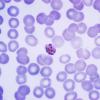Science & Technology
 <p>Kicking off the 2015-16 CU Theatre & Dance season, “[UN] W.R.A.P.: Undoing Writing, Research and Performance” explores the complexity and evolution of “Black Dance.” The three-day symposium, held Sept. 18-20 at the Irey Theatre, will look at the historical impact and ongoing contributions of African American choreographers.</p>
<p>Kicking off the 2015-16 CU Theatre & Dance season, “[UN] W.R.A.P.: Undoing Writing, Research and Performance” explores the complexity and evolution of “Black Dance.” The three-day symposium, held Sept. 18-20 at the Irey Theatre, will look at the historical impact and ongoing contributions of African American choreographers.</p> <p>Waleed Abdalati, professor of geography at the University of Colorado Boulder and director of the Cooperative Institute for Research in Environmental Sciences (CIRES), will co-chair a <a href="http://sites.nationalacademies.org/SSB/CurrentProjects/SSB_166359">prestigious national committee</a> charged with developing U.S. priorities for observing Earth’s atmosphere, oceans and land surfaces by satellite.</p>
<p>Waleed Abdalati, professor of geography at the University of Colorado Boulder and director of the Cooperative Institute for Research in Environmental Sciences (CIRES), will co-chair a <a href="http://sites.nationalacademies.org/SSB/CurrentProjects/SSB_166359">prestigious national committee</a> charged with developing U.S. priorities for observing Earth’s atmosphere, oceans and land surfaces by satellite.</p> <p>The ecological complexity of many emerging disease threats—interactions among multiple hosts, multiple vectors and even multiple parasites—often complicates efforts aimed at controlling disease. Now, a new paper co-authored by a University of Colorado Boulder professor is advancing a multidisciplinary framework that could provide a better mechanistic understanding of emerging outbreaks.</p>
<p>The ecological complexity of many emerging disease threats—interactions among multiple hosts, multiple vectors and even multiple parasites—often complicates efforts aimed at controlling disease. Now, a new paper co-authored by a University of Colorado Boulder professor is advancing a multidisciplinary framework that could provide a better mechanistic understanding of emerging outbreaks.</p> <p>The longest and largest controlled burn experiment ever conducted in the Amazon rainforest has yielded new insight into the ways that tropical forests succumb to—and bounce back from—large-scale wildfires, according to new research co-authored by a University of Colorado Boulder professor.</p>
<p>The longest and largest controlled burn experiment ever conducted in the Amazon rainforest has yielded new insight into the ways that tropical forests succumb to—and bounce back from—large-scale wildfires, according to new research co-authored by a University of Colorado Boulder professor.</p> <p>The University of Colorado Boulder announced today that the Center for Western Civilization in the College of Arts and Sciences is now the Center for Western Civilization, Thought and Policy (CWCTP) and incorporates CU-Boulder’s successful Visiting Scholar in Conservative Thought and Policy program. </p>
<p>The University of Colorado Boulder announced today that the Center for Western Civilization in the College of Arts and Sciences is now the Center for Western Civilization, Thought and Policy (CWCTP) and incorporates CU-Boulder’s successful Visiting Scholar in Conservative Thought and Policy program. </p>- <p>The humble dust collecting in the average American household harbors a teeming menagerie of bacteria and fungi, and as researchers from the University of Colorado Boulder and North Carolina State University have discovered, it may be able to predict not only the geographic region of a given home, but the gender ratio of the occupants and the presence of a pet as well.</p>
- <p>A first-of-its-kind, nationally representative <a href="http://www.aera.net/Newsroom/RecentAERAResearch/PolygenicInfluenceonEducationalAttainmentNewEvidenceFromtheNationalLongitudinalStudyofAdolescenttoAdultHealth/tabid/16036/Default.aspx"><span class="s2">study</span></a> of siblings supports previously published research on unrelated individuals that links specific genotypes to educational attainment among adults in their mid-20s to early 30s.</p>
 <p>The University of Colorado Boulder has received a $3 million federal grant to develop cooling technology that will enable efficient, low-cost supplementary cooling for thermoelectric power plants.</p>
<p>The University of Colorado Boulder has received a $3 million federal grant to develop cooling technology that will enable efficient, low-cost supplementary cooling for thermoelectric power plants.</p>- <p>University of Colorado faculty research merited $878.3 million in research awards during the 2014-15 fiscal year, based on preliminary figures, representing a near-record year for the four-campus system.</p>
- <p>The University of Colorado Boulder was ranked No. 34 in the 2015 Academic Ranking of World Universities (ARWU) released today by the Center for World-Class Universities at Shanghai Jiao Tong University.</p>


